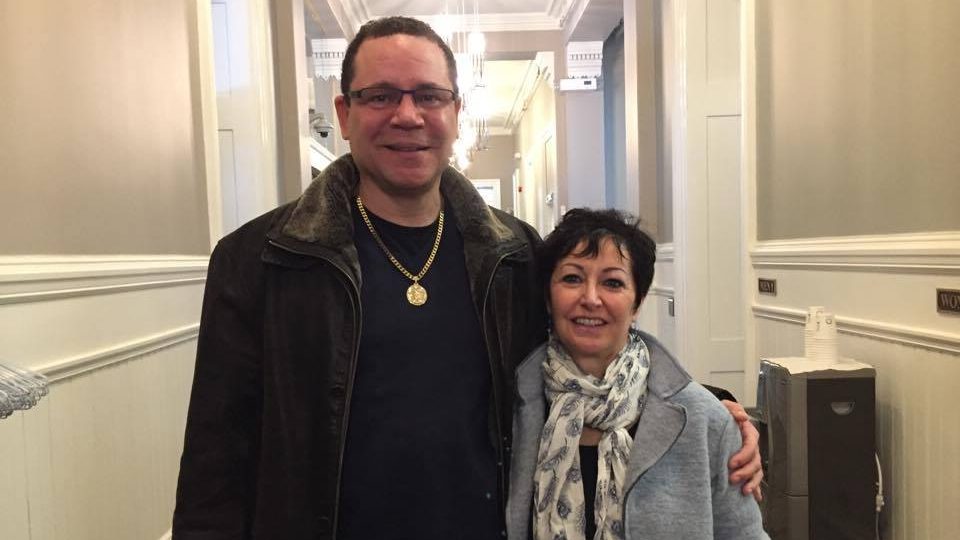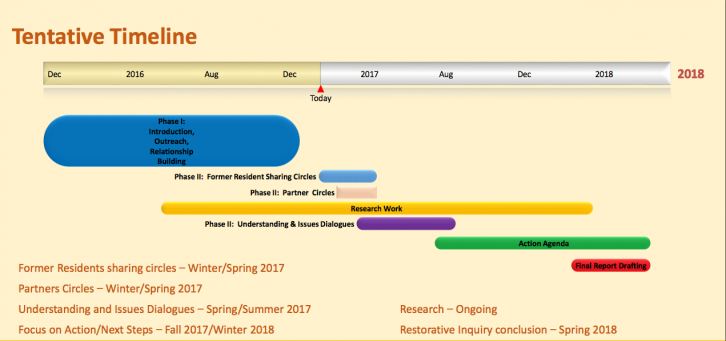Home for Colored Children
Restorative inquiry into the Nova Scotia Home for Colored Children proceeding to second phase
Inquiry’s first phase was relationship building, next will be learning and understanding

caption
Tony Smith and Chief Judge Pam Williams, co-chairs of council of parties for the restorative inquiryA restorative inquiry that was formed by former residents of the Nova Scotia Home for Colored Children has completed its first phase. The former residents chose to proceed with a restorative inquiry, which is focused on solutions for the future, as opposed to a traditional inquiry, which only looks to the past.
To help accomplish this goal, the inquiry examines the Home’s role in anti-black racism in Nova Scotia, both historically and in the present. The inquiry began in late 2015.
On Monday at a meeting for the Board of Police Commissioners, Tony Smith, co-chair of the inquiry, presented on its success and what the next steps are.
The Home for Colored Children was an orphanage for African-Nova Scotians that operated for much of the 20th century. It opened in 1921, by the 1970s it was a home for all youth, and now it operates as the Akoma Family Centre. Eventually, stories came to light about the abuse that the residents suffered at the hands of the staff during the building’s original incarnation. Related stories
"We were never at the table," says Home for Colored Children survivor
“I was always hungry; we’d been abused physically, sexually, mentally,” said Smith in an interview after the presentation. He was a resident for a short time as an infant in 1961 and again for about three and a half years starting in 1965.
But Smith wants the community to learn and improve from his and the other residents’ negative experiences. To that end, another benefit of the restorative inquiry is that it allows changes to be made in real time.
“You usually get all kinds of recommendations,” said Smith of the traditional process. “Some may be implemented, but often times it’s a book just put on the shelf and left there.”
The inquiry’s goal in its first phase was to build relationships among members of the community, not just former residents. They also spoke to young African Nova Scotians and public agencies, such as the RCMP and Halifax Regional Police.
According to the inquiry’s report for the meeting, the inquiry has learned a lot about how those groups feel concerning racism in the province from the first phase. The former residents of the Home want to make a difference for African Nova Scotian youth, who they say still feel the effects of systemic and institutionalized racism.
Members of the Board of Police Commissioners said they were impressed and moved by the inquiry’s work so far. Deputy Mayor Steve Craig, chair for the board, commended the effort to make connections.
“Relationships are formed by individuals, not institutions,” he said.

caption
A slide from the presentation showing the tentative timeline for the inquiryNow that the first phase is complete, the second and third phases can begin. They are focused on learning and understanding, and planning and action. The second phase began on March 16, with a sharing circle for former residents. The inquiry aims to complete a report by spring of 2018, but it also has a task group that can make changes before the mandate is over.
Smith said the inquiry means a lot to the African-Nova Scotian community.
“This is the first real opportunity that we can start building relationships with people that we never had before,” he said.

